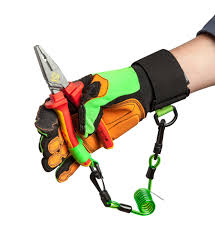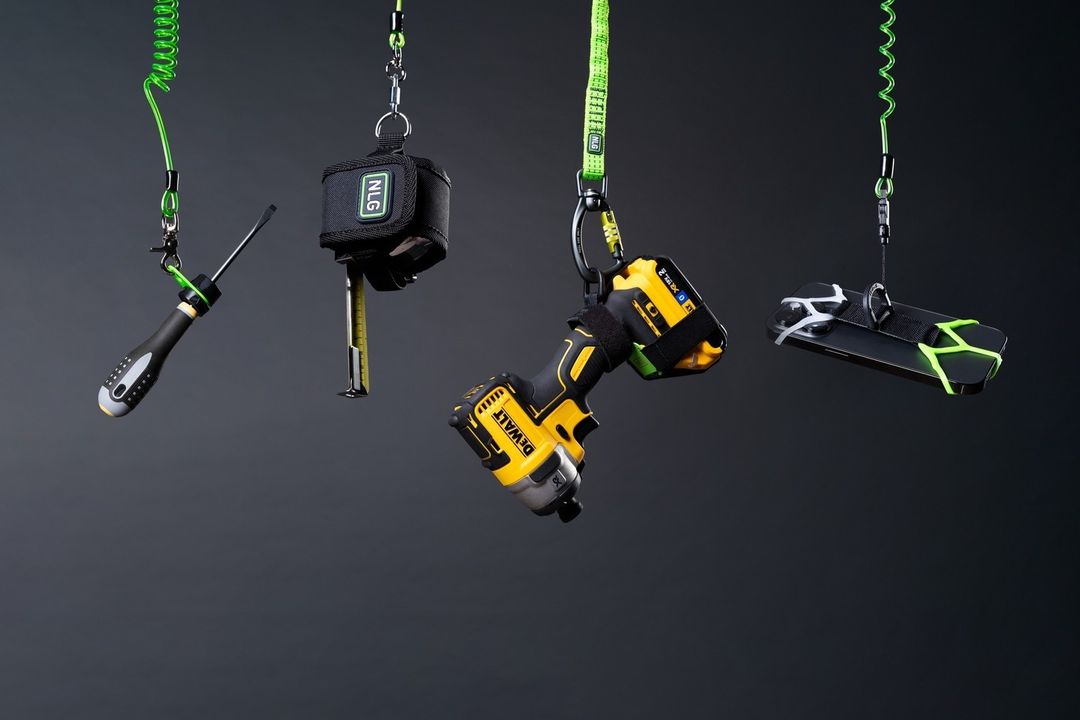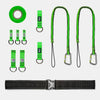In this photo guide we show you how to attach a tool lanyard. And of course we also show you what not to do! The best way to attach your tools depends partly on your personal preferences. But beyond personal preference, there are a number of safety factors that we explain below.
We have illustrated two recognized and approved ways to attach tools to your wrist or to your tool belt.

Wrist Tool Lanyard Tethering System
(In this photo you see: NLG Wristband ,Short Coiled Tool Lanyard , Tether Tape ™ and NLG Screwdriver Tether)
The advantages of tools attached to your wrist:
- Short tool lanyard, low risk of entanglement
- Compact solution, ideal for tight spaces
- Lightweight parts, comfortable even during prolonged use.
We do not recommend attaching tools heavier than 1.5kg to the wrist. The force from a potential fall of the tool could lead to an injury.

Tool Belt / Waist Tool Lanyard Tethering System
(In this photo you see: Belt Loop Anchor , Coiled Tool Lanyard , Tether Tape ™ and Large D Ring Tool Tether )
The benefits of tools attached to your belt:
- Versatile, heavy duty suitable for most tools
- Multiple items can be attached and used immediately
- Various configurations possible
Only attach tools up to 2.5kg from the waist/tool belt. Heavier tools and objects should be secured to a secure anchor point rated for load.
How not to tether tools!
Here are some examples of incorrectly linked tools.
We have found that cylinder locks on tool lanyards can cause confusion and lead to misuse. That's why ours don't have latches. Instead, NLG's tool lanyards use a regular heavy-duty loop (Dyneema® strap option) that can be securely tied around the chain or anchor point.

Rather than attaching a tool lanyard directly to the tool, it is always helpful to create an attachment point first. This allows you to quickly switch between tools while working from one tool string. Remember to only use certified NLG Tether Tape ™ on tools as other tapes are not load tested and rated.
A regular maintenance program is essential to ensure that the attachment points continue to meet the necessary operational standards. Any damaged cables or tool cords must be removed from service immediately. Please note that different working environments place different demands on your tools and lanyards, so you should always inspect them before use.
When using Tether Tape™, the D-ring lock must be visible at all times. Excessive use of tape can potentially hide wear at the mounting point and prevent proper inspection from being performed.
Although anyone can apply tool fasteners, we always recommend that users obtain sufficient knowledge. This is to ensure that tool fasteners are properly applied to the tool. In addition, it is very important to be aware of the dangers of falling objects.
Striving for a safer workplace and staying up to date on the latest safety innovations can be a daunting task. At ZeroDrops.nl we are happy to help you with this!




